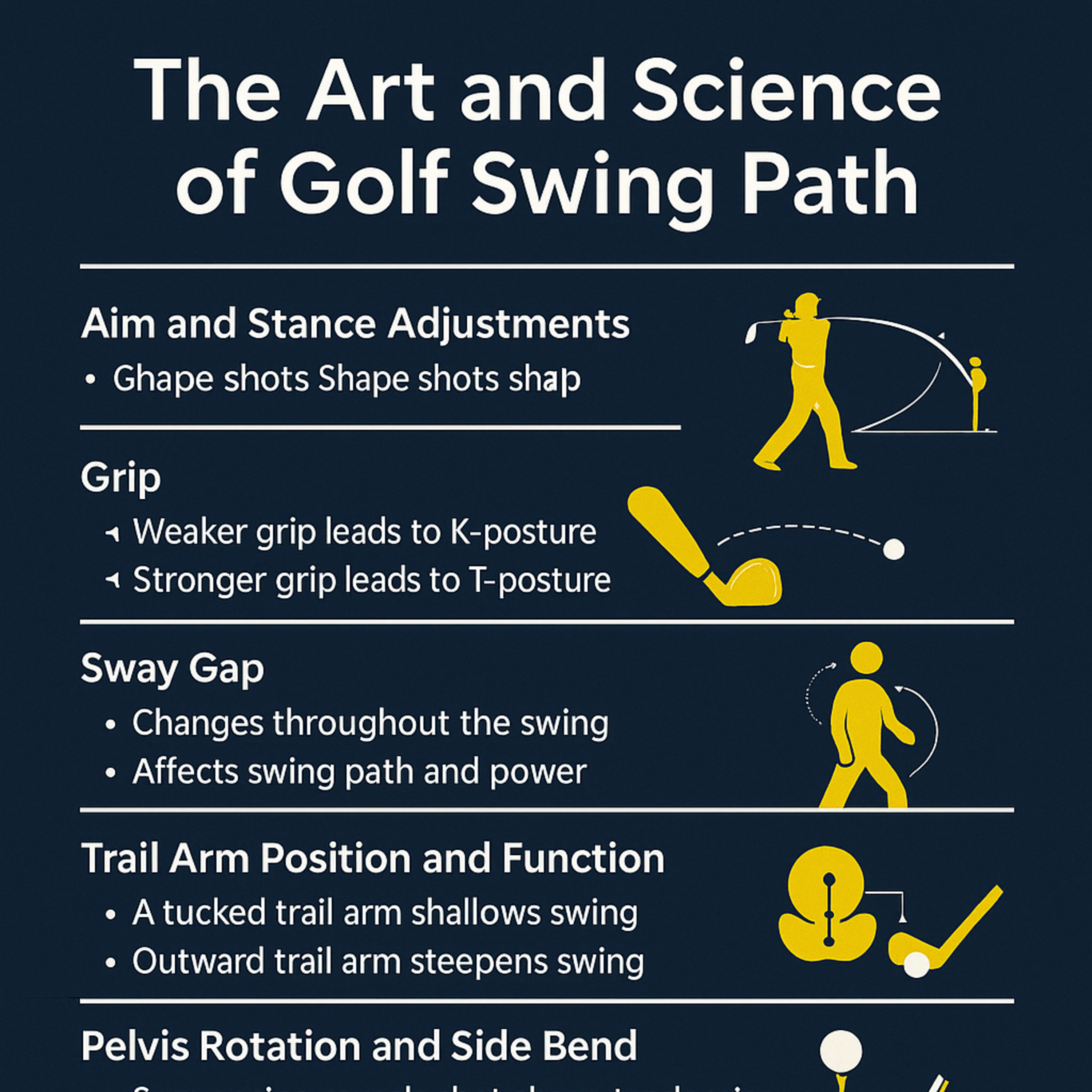#261 The Art and Science of Golf Swing Path
- Author
- Golf247.eu
- Published
- Sat 21 Jun 2025
- Episode Link
- https://podcasters.spotify.com/pod/show/puttin-pro/episodes/261-The-Art-and-Science-of-Golf-Swing-Path-e34h75r
Modern golf instruction is experiencing a data revolution. Thanks to cutting-edge 3D analysis tools like Sportsbox AI, we now have deeper insights into the biomechanics of the golf swing—especially the elusive and critical element: swing path. What was once guided by feel and theory is now supported by measurable, visualized motion data. And the findings are reshaping how we coach and play.
Aim and Stance: The Silent Architects
Few golfers appreciate just how powerful aim is in shaping swing path. Instead of adjusting their swing, many professionals alter their stance to hit fades or draws. For example, aiming significantly right encourages the body to swing left instinctively—producing the desired shot shape. It's a quiet yet decisive influence built into our natural coordination.
Grip and Posture: K vs. T
Grip affects much more than hand placement. It influences elbow positioning, shoulder alignment, and side bend—all of which impact the shaft’s orientation at setup. A weaker grip often produces a K-posture (trail elbow out, open shoulders), which typically promotes a fade. A stronger grip leads to a T-posture (tucked elbow, closed shoulders), favoring a draw. These subtle postural shifts cascade into swing path outcomes.
Sway Gap: The Dynamic Differential
One of the most revealing metrics is sway gap—the difference in lateral motion between the chest and pelvis throughout the swing. This gap evolves through four key phases: address, backswing, transition, and impact. Maintaining or increasing it dynamically at impact is strongly associated with enhanced sequencing and added power. Players like Tiger Woods exemplify this motion pattern.
Trail Arm Function: Under vs. Cover
The trail arm's motion also plays a decisive role. A tucked elbow (under-style) shallows the swing and promotes a path to the right—ideal for fades. In contrast, a more flared elbow (cover-style) steepens the swing path, producing draws. These aren’t isolated mechanics; they ripple through the entire body sequence.
Pelvis Rotation and Side Bend
When the pelvis side bend reaches zero in relation to its rotation, it signals key swing tendencies. Players who favor draws and those who favor fades often differ at this checkpoint—again revealing how body movement patterns underpin shot shape preferences.
The Power of Small Adjustments
Foot flare, stance width, and ball position all influence swing dynamics. A narrower stance, for instance, can limit sway and increase rotation, providing more control. Even minor changes, when data-informed, can yield meaningful results.
Club Path, Face Angle, and Attack Angle
Understanding the difference between swing path (body direction) and club path (club head direction) is critical. The ball's flight is governed by the club path and face angle at impact. A club path to the right with a square face results in a push; a closed face adds fade spin. The opposite is true for leftward paths and open faces. Attack angle—how steeply or shallowly the club meets the ball—further controls launch and spin characteristics.
The Enemy of Flow: Stiffness
Tension, both mental and physical, hinders performance. Over-controlling the motion disrupts rhythm, tempo, and sequencing. Drills that emphasize continuous motion—like uninterrupted swings—restore flow and promote freedom in movement.
Conclusion: Personalization Over Perfection
There is no single blueprint for the perfect swing. Instead, golfers should embrace their physical tendencies and focus on building dynamic matchups that work with their bodies. The modern game is about data-driven personalization. The goal isn’t to conform—it’s to optimize. Through understanding your unique mechanics, you can craft a swing that’s not only repeatable, but unmistakably your own.
